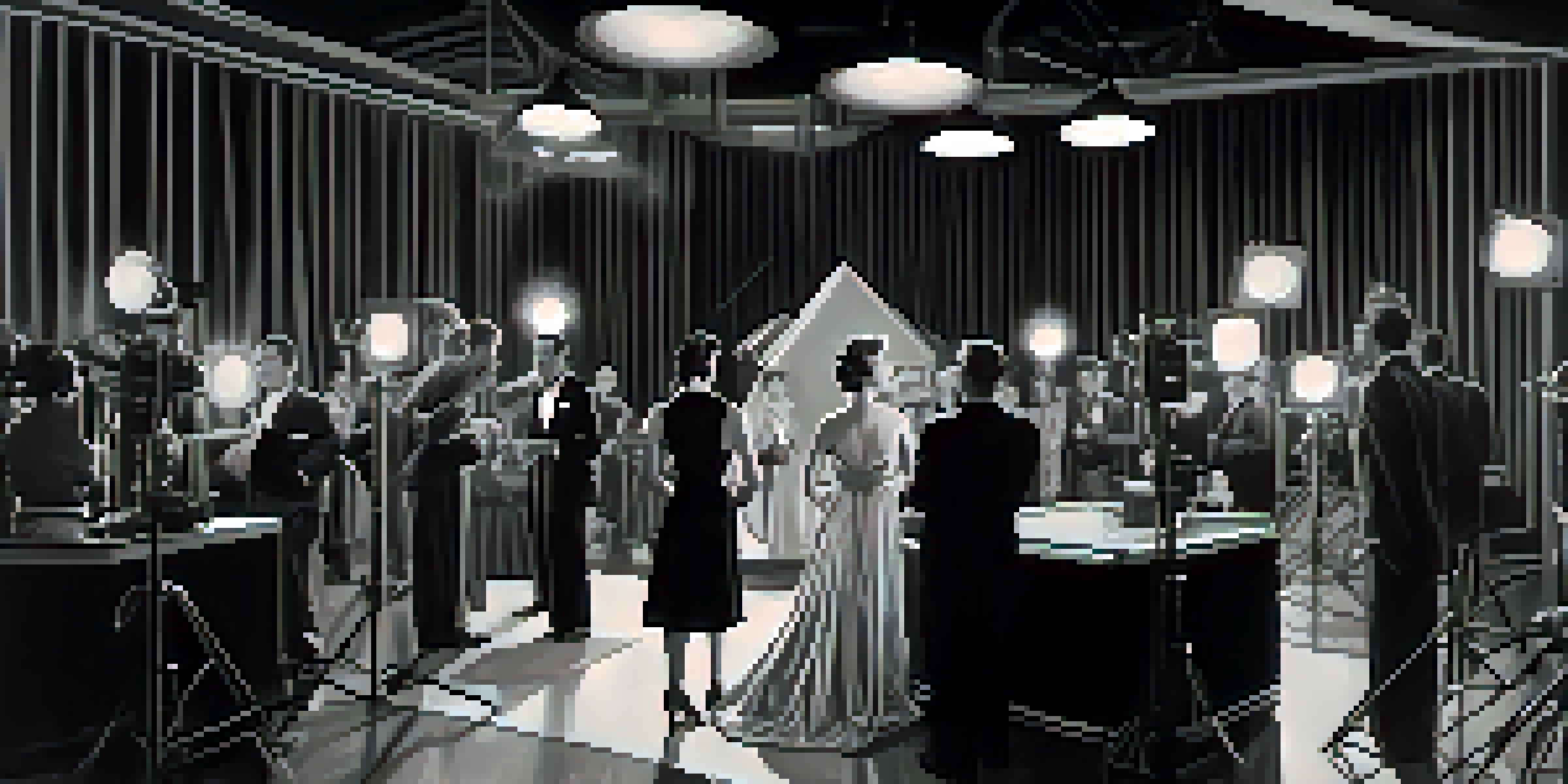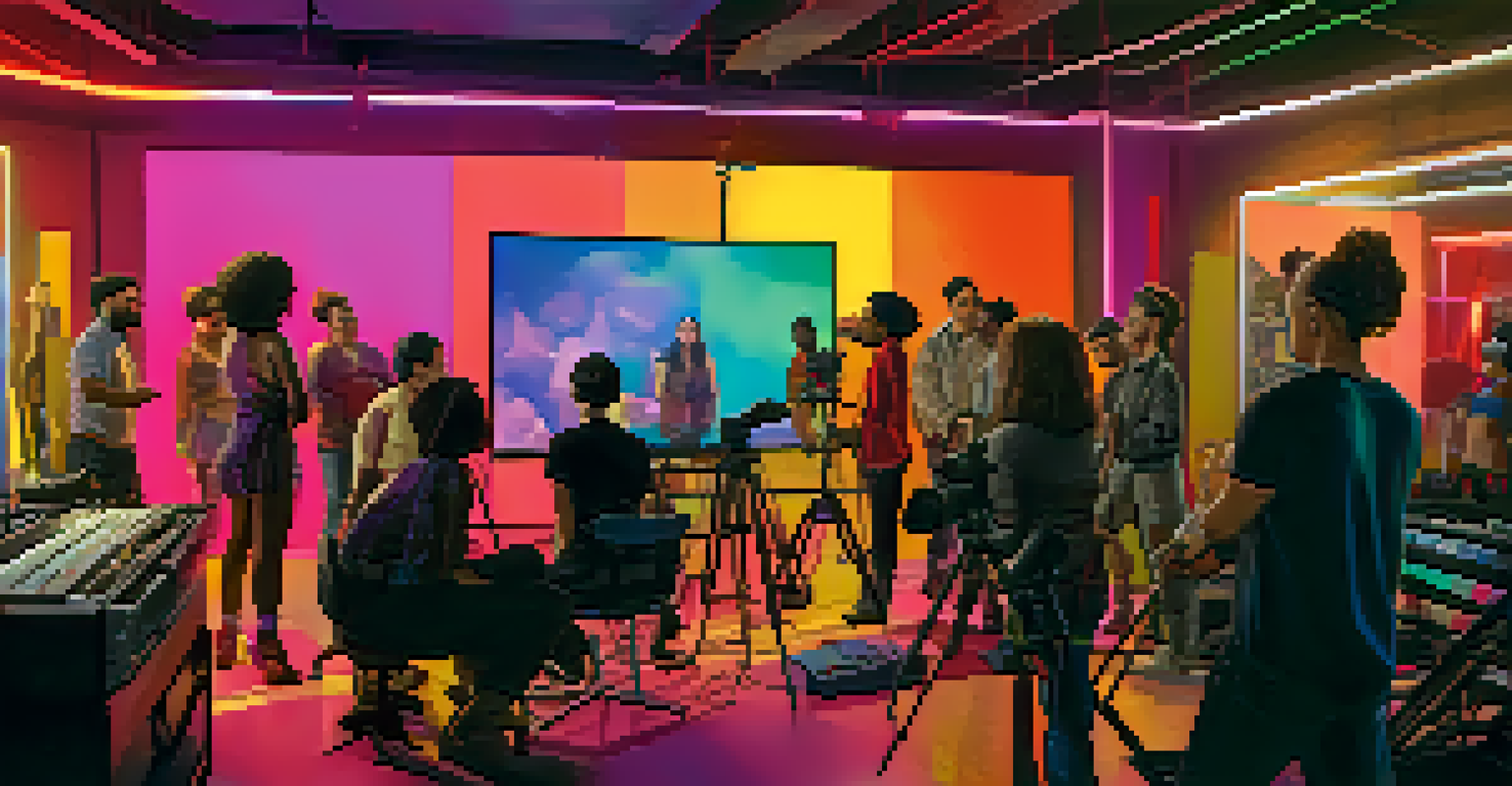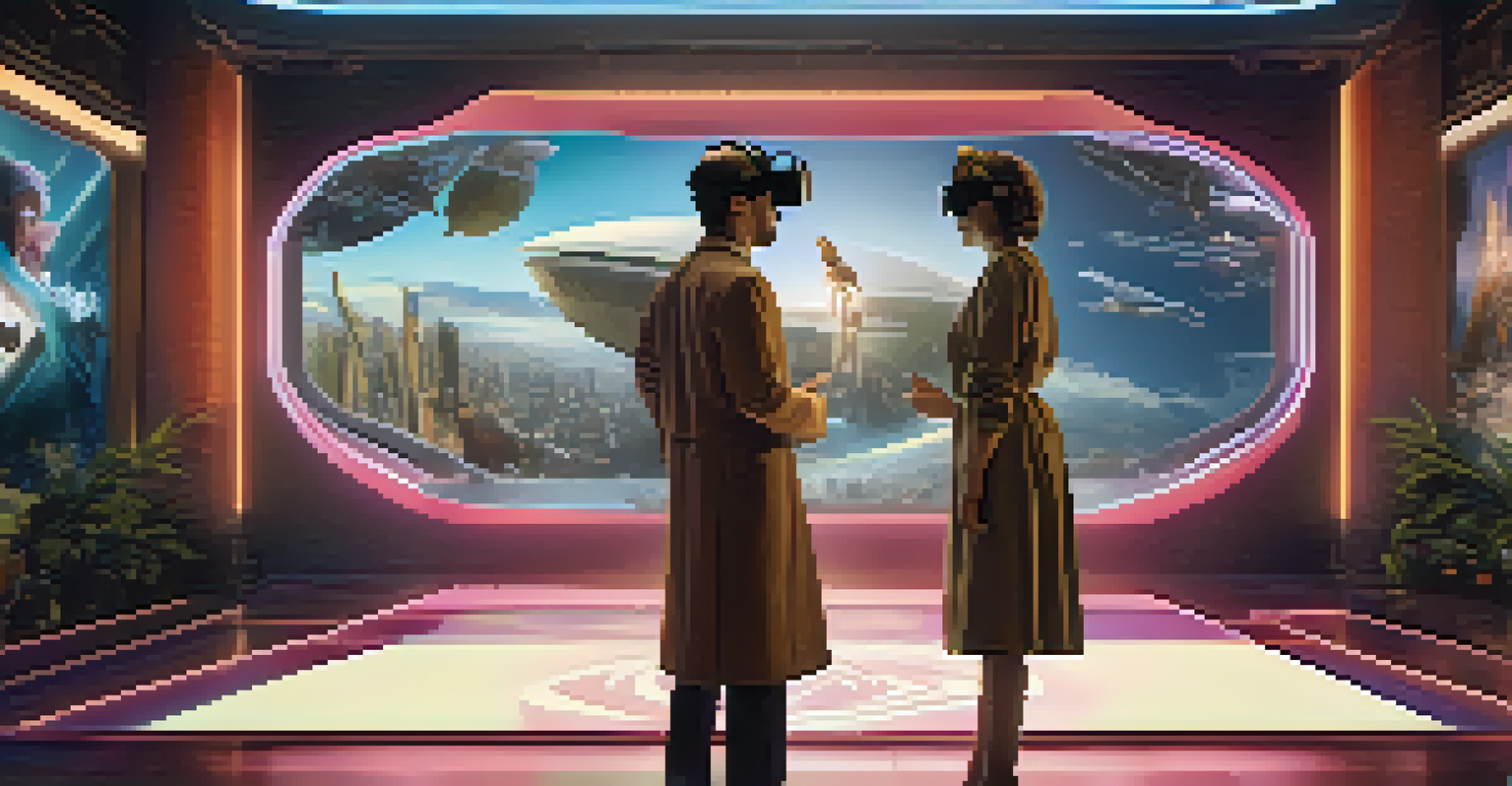The Evolution of Gender Roles in Film: A Historical Perspective

The Silent Era: Gender Roles in Early Cinema
In the silent film era, gender roles were primarily defined by societal norms of the time. Women often played damsels in distress, while men were heroic figures, showcasing a clear binary division. These roles reflected the limited opportunities women had outside the home, reinforcing traditional expectations.
Cinema is a mirror by which we often see ourselves.
With no dialogue, visual storytelling relied heavily on exaggerated expressions and gestures, often reducing female characters to mere symbols of beauty or virtue. The likes of Mary Pickford and Charlie Chaplin became iconic, yet their portrayals often lacked depth for female characters. This simplistic representation set the stage for future developments in film narratives.
As cinema evolved, so did the awareness of these restrictive roles. Critics began to challenge the norms, paving the way for a more nuanced exploration of gender. This early phase laid the groundwork for the gradual transformation of gender roles in film, an evolution that would become more pronounced in the coming decades.
The Golden Age: Stereotypes and the Hollywood Studio System
The Golden Age of Hollywood, spanning from the 1920s to the 1960s, saw the emergence of the studio system, where gender roles became entrenched in specific stereotypes. Women were often cast as glamorous stars, with roles centered around romance and domesticity, while men took on powerful, adventurous personas. This segregation not only limited storytelling but also influenced public perception of gender roles in society.

During this era, iconic films such as 'Gone with the Wind' and 'Casablanca' reinforced traditional gender dynamics. Female characters were often portrayed as either nurturing or seductive, while male characters embodied strength and authority. The impact of these portrayals shaped cultural expectations, contributing to the myth of the 'ideal' man and woman.
Gender Roles Evolve Over Time
The portrayal of gender roles in film has shifted from simplistic stereotypes in early cinema to more complex and diverse characters reflecting societal changes.
Despite the prevalence of these stereotypes, the Golden Age was not without its trailblazers. Actresses like Katharine Hepburn defied conventions with strong, independent characters, challenging the norms of femininity. These shifts hinted at a growing awareness and desire for more complex female roles, foreshadowing the changes to come in later decades.
The 1960s and 1970s: A Cultural Revolution in Film
The 1960s and 1970s marked a significant cultural revolution, reflected in the film industry. This period saw the rise of the feminist movement, which directly influenced how women were portrayed on screen. Films began to feature stronger female characters who were not solely defined by their relationships with men, offering audiences a fresh perspective.
The best way to change the world is to change the story.
Iconic films like 'The Graduate' and 'Easy Rider' challenged traditional gender roles, showcasing women as independent and complex individuals. The emergence of the anti-hero also allowed for more nuanced portrayals of masculinity, as men grappled with vulnerability and emotional depth. This era pushed the boundaries of storytelling, encouraging filmmakers to explore new narratives.
However, despite these advancements, the industry still faced backlash. Many films continued to perpetuate stereotypes, and the struggle for equitable representation was far from over. Nevertheless, this era laid the foundation for ongoing discussions about gender roles in film, paving the way for future generations of filmmakers.
The 1980s and 1990s: A Push for Diversity and Complexity
The 1980s and 1990s ushered in a new wave of films that began to embrace diversity and complexity in gender roles. The rise of action films led to the emergence of strong female protagonists, as seen in franchises like 'Terminator' and 'Aliens.' These characters, such as Sarah Connor and Ellen Ripley, broke free from traditional roles, embodying strength and resilience.
At the same time, male characters began to show a softer side, moving away from the one-dimensional 'tough guy' archetype. This shift opened the door for exploring emotional depth and vulnerability in male characters, as seen in films like 'Good Will Hunting.' The 90s also saw more diverse representations of gender and sexuality, with films addressing issues of identity and inclusion.
Impact of Cultural Movements
Cultural movements like feminism and recent social initiatives have significantly influenced the representation of women and gender identities in modern films.
However, the industry was still grappling with significant challenges. While progress was evident, the portrayal of women and other marginalized groups often remained limited. Nonetheless, this era marked a crucial turning point, inspiring future filmmakers to continue pushing for nuanced and multifaceted portrayals of all genders.
The 21st Century: Breaking Stereotypes in Modern Cinema
Entering the 21st century, filmmakers have increasingly challenged and deconstructed traditional gender roles, leading to a more inclusive and diverse representation in cinema. Blockbuster hits like 'Wonder Woman' and 'Black Panther' showcase strong, complex characters who defy conventional stereotypes, resonating with audiences worldwide. These films highlight the importance of representation and the impact it has on shaping perceptions of gender.
The rise of streaming platforms has also played a pivotal role in this evolution, allowing for a wider variety of stories to be told. Independent films and documentaries have gained traction, offering new narratives that explore gender beyond the Hollywood formula. This accessibility encourages diverse voices, fostering a richer tapestry of storytelling.
Moreover, the conversation around gender roles continues to evolve, with audiences demanding more authenticity and depth in character portrayals. Movements like #MeToo and Time's Up have prompted industry-wide discussions about representation and equity, pushing for systemic change. As a result, contemporary cinema is not only reflecting societal shifts but also actively participating in the ongoing dialogue about gender roles.
The Impact of Technology on Gender Representation
Technology has had a profound impact on how gender roles are represented in film. The rise of social media, for instance, allows audiences to engage directly with filmmakers and share their perspectives on representation, leading to more accountability in storytelling. This dialogic relationship encourages creators to consider diverse viewpoints, ultimately enhancing the richness of narratives.
Additionally, advancements in production tools and techniques have democratized filmmaking, empowering underrepresented voices to tell their own stories. Independent filmmakers can now create and distribute content that challenges mainstream narratives, offering fresh perspectives on gender roles. This shift has been instrumental in diversifying the types of stories reaching audiences.
Technology Enhances Representation
Advancements in technology and the rise of independent filmmaking have empowered diverse voices and challenged traditional narratives in the film industry.
As we move forward, ongoing technological innovations will likely continue to shape the landscape of film. The ability to create immersive experiences through virtual reality and interactive storytelling can further challenge traditional gender roles, allowing audiences to engage with narratives in new ways. This intersection of technology and storytelling holds exciting possibilities for the future of gender representation in film.
Future Trends: The Ongoing Evolution of Gender Roles
Looking ahead, the evolution of gender roles in film is poised to continue as societal attitudes shift and new conversations emerge. As audiences demand more authentic and diverse representations, filmmakers are increasingly challenged to push boundaries and explore complex narratives. This evolving landscape may lead to a new era of storytelling that breaks free from outdated stereotypes.
Moreover, the importance of intersectionality cannot be overlooked. Future films are likely to delve deeper into the interplay of gender, race, sexuality, and class, creating multifaceted characters that reflect the richness of real-life experiences. This focus on intersectionality will not only enrich storytelling but also foster greater empathy and understanding among audiences.

Ultimately, the evolution of gender roles in film is a reflection of our collective journey towards equality and understanding. As filmmakers continue to challenge norms and push for inclusivity, the stories we tell will shape the cultural landscape for generations to come. The future of cinema holds the promise of greater representation, allowing all voices to be heard and celebrated.